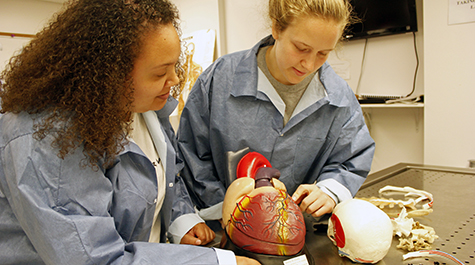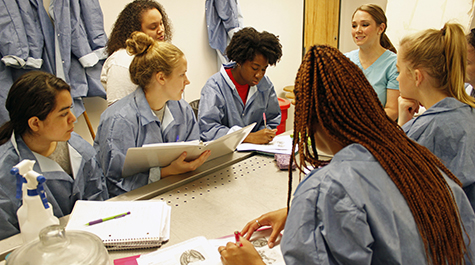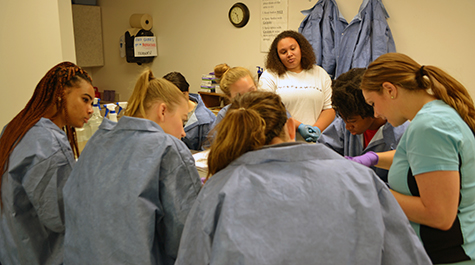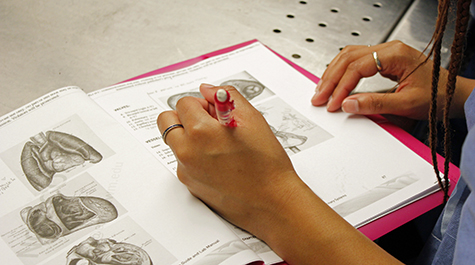Cadaver lab
A human approach to human anatomy
On a recent Tuesday, seven undergrads huddled around a steel dissection table as their lab instructor, Ashleigh Everhardt Queen, discussed matters of the heart.
“Here we go. Coronary vessels, these are the vessels of the heart,” Queen said, probing the human heart with a gloved hand and a scalpel. “The heart is a selfish organ, remember that. It is going to take its blood first. It also does more work than any other muscle in your body, so that makes sense.”
Queen opened the heart to reveal a vast array of structures. For most students, it was the first time they had seen the inner workings of an actual human heart.
Each year, roughly 160 students at William & Mary enroll in the Human Anatomy Lab, a class that for over 50 years has allowed undergraduate students to gain an understanding of anatomy using actual human cadavers.
According to the Virginia State Anatomical Program, the organization that regulates the distribution of cadavers, William & Mary has historically been one of the few undergraduate institutions in Virginia to offer cadaveric dissection and the department is home to one of the oldest programs in the state.
“As a physical therapist, I work with human beings,” said Evie Burnet, lecturer in the Department of Kinesiology, who has taught the lab for 13 years. “I don’t work with cats and I don’t work in virtual reality. Without seeing an actual human body, our students really cannot appreciate the three-dimensional arrangement of its structures. You have to be able to visualize the orientation of muscles and their fibers, organs, nerves and vessels in order to fully understand how it all works together. Nothing else comes anywhere close to doing this for you.”
In an effort to give students more experience with cadavers, each semester the faculty select one or two high-achieving students to mentor their fellow undergraduates in each lab section. “This lab is the reason I decided to go to William & Mary,” says Brooke Ford, the lab’s teaching assistant. “It has one of the only programs where they allow students to dissect, not just view the body, but actually dissect. It’s important for me to know what’s going on in these structures, what’s happening during processes. I need to see it firsthand.”
Two bodies are provided to the lab during the fall and spring semesters. The summer lab dissects only one. During the regular school year, students have the option of actively dissecting during the lab or viewing the dissection. This allows students to feel comfortable being as hands-on or hands-off as they’d like.
At William & Mary, many of the students walk into the lab never having done any dissection before. The course has never been major-locked, meaning that it’s open to anyone with an interest.
“We’ve had art majors who want to understand the human body to better do whichever medium of art they specialize in,” says Burnet. “I had a student in the fall who was a business major. He just thought the class sounded unique and he was an amazing student. I actually asked him if he was sure he wanted to do business, because I thought medicine was his calling. He stayed with business, but that just shows the variety of students who learn from this experience.”



















